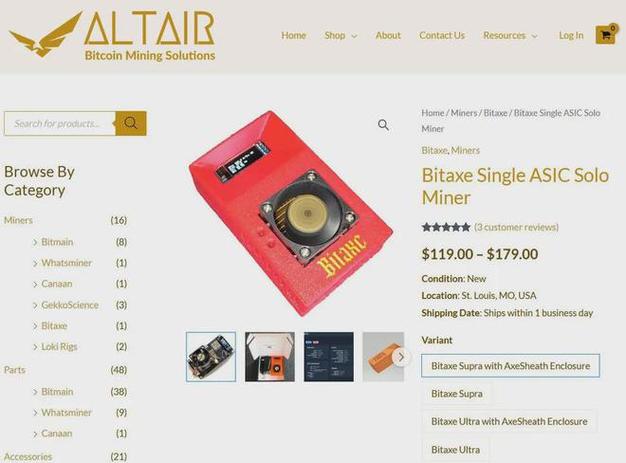In the ever-evolving landscape of cryptocurrency mining, South Africa has emerged as a unique market with its own dynamics, especially when it comes to ASIC miners. The question, “Is it worth it?” resonates deeply among local enthusiasts and investors eyeing the potential of mining Bitcoin (BTC), Ethereum (ETH) alternatives, or even the rapidly rising Dogecoin (DOG). With the fluctuating costs of mining rigs, and hosting services gaining traction, comprehending the intricacies of ASIC miner prices and their profitability has become paramount. This review dives into the factors driving costs, potential returns, and how mining farms in South Africa are adapting to this digital gold rush.
The global ASIC miner market is influenced by multiple variables, yet South African buyers face additional challenges such as import taxes, shipping delays, and fluctuating electricity tariffs. For instance, Bitcoin miners like Bitmain’s Antminer series, which dominate the SHA-256 mining algorithm, have seen price surges due to increased demand amid Bitcoin’s price rallies. The localized cost of an ASIC miner in South Africa often exceeds the global average, making upfront investments heavy. However, this high initial expenditure can be offset if miners are coupled with efficient hosting services that provide cooled environments, regular maintenance, and steady power supply – vital elements for operational efficiency and longevity.

Interestingly, the hosting mining machine service boom in South Africa is reshaping how individual miners approach profitability. Instead of setting up noisy, heat-generating rigs at home—sometimes spiking electricity bills—many prefer to lease colocation in mining farms. These farms cluster hundreds of ASIC miners, leverage economies of scale, and often negotiate better electricity rates. This communal model diminishes individual operational risks while potentially enhancing returns. Moreover, advanced hosting providers offer real-time monitoring platforms, automated maintenance, and even consultancy on which mining pools to join or when to trade hashing power, embedding flexibility and optimization into the mining lifecycle.
Beyond Bitcoin, the Ethereum network has traditionally favored GPU mining, but with the approaching shift to ETH 2.0’s proof-of-stake, miners have diversified interest towards altcoins such as Dogecoin, which relies on Scrypt ASIC miners. The unique position of Dogecoin, thriving off viral social media trends and community support, has spurred interest in acquiring specialized ASICs optimized for Scrypt. For South African miners, this diversification could hedge against Bitcoin’s price volatility. However, profitability calculations must weigh the cost of specialized hardware, network difficulty, and the coin’s market capitalization. Indeed, Dogecoin’s distinct journey challenges traditional mining economics and underscores the need for agile investment decisions.

The role of cryptocurrency exchanges in South Africa cannot be understated in this equation. Platforms such as Luno and AltCoinTrader bridge local miners to global markets, enabling swift conversion of mined coins into fiat currency. Moreover, exchange features like staking, lending, and leverage trading provide miners additional avenues to optimize profit margins. Yet, the fees involved, withdrawal limits, and exchange rate spreads inject another layer of complexity. Savvy miners often time coin sales to ride market highs, or choose to hold assets, especially anticipating Bitcoin halving events that historically drive price surges, thereby increasing mining rewards’ value.
Moreover, the infrastructure of mining farms in South Africa is witnessing innovation. From deploying renewable energy sources to integrating AI-powered cooling systems, these farms aim to reduce operational costs—often the biggest drain on mining profitability. Miners operating in such environments enjoy substantial advantages: extended hardware life, reduced downtime, and compliance with environmental standards, which are increasingly valued by stakeholders and regulators. This synthesis of technology and sustainable practices illustrates how the mining industry evolves, promising both economic and ecological dividends.
In conclusion, whether ASIC mining in South Africa is “worth it” depends on a multitude of intertwined factors: initial miner costs influenced by global supply chains and local levies; operational efficiencies gained from hosting services; cryptocurrency price dynamics, particularly of BTC, DOG, and ETH; and auxiliary supports like exchanges and innovative mining farms. The rapidly shifting terrain demands prospective miners to not only analyze hardware performance metrics but also stay attuned to market trends and infrastructural developments. For those who can navigate this complex ecosystem, unlocking substantial returns from ASIC mining is not just possible—it’s a gateway into the expanding universe of decentralized finance and digital assets.
Leave a Reply